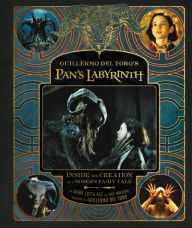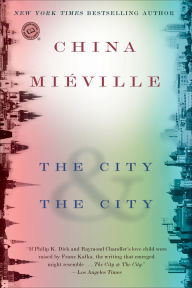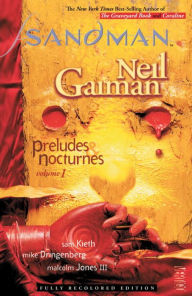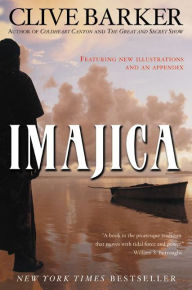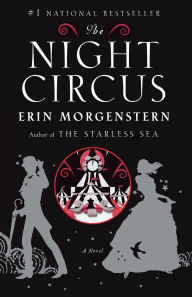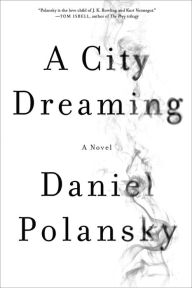5 Fantasy Books Guillermo del Toro Needs to Adapt
 Guillermo del Toro’s Pan’s Labyrinth is celebrating its 10th anniversary this year. Blending dark fantasy and political violence in Francisco Franco’s Spain, the film grounds otherworldly fairy tale elements with the harrowing wartime story of Ofelia, whose new stepfather is tasked with tracking down the remnants of republican rebellion.
Guillermo del Toro’s Pan’s Labyrinth is celebrating its 10th anniversary this year. Blending dark fantasy and political violence in Francisco Franco’s Spain, the film grounds otherworldly fairy tale elements with the harrowing wartime story of Ofelia, whose new stepfather is tasked with tracking down the remnants of republican rebellion.
Guillermo del Toro's Pan's Labyrinth: Inside the Creation of a Modern Fairy Tale
Guillermo del Toro's Pan's Labyrinth: Inside the Creation of a Modern Fairy Tale
By Guillermo del Toro , Nick Nunziata , Mark Cotta Vaz
Hardcover $50.00
The hauntingly (sometimes nightmarishly) beautiful film was broadly acclaimed, and announced del Toro to a wider American audience, marrying the artistic sensibilities of his Spanish-language films Cronos and The Devil’s Backbone with the visual mastery and striking style he brought to big budget Hollywood films like Hellboy and Blade II.
Even 10 years later, Pan’s Labyrinth is an exemplar of del Toro’s work: strong visual sensibilities frequently accompanied by beautiful and terrifying imagery, grounded in stories of people (sometimes children) who would rather be almost anywhere else, but nonetheless rise to the occasion. Remember the Pale Man? The child-eating creature with eyeballs in his hands? Of course you do. In honor of the anniversary, there’s a new coffee table book out documenting the creation of this landmark film. The director’s striking imagination is on full display, from initial concepts and sketches to the more practical work of putting the film together, with interviews from all of the principals. Aside from the behind-the-scenes, there is production art, concept design, and film stills from one of the most beautiful films of the last decade.
All this reminiscing got us thinking: Pan’s Labyrinth was an original concept, but there are several books we’d love to make it to the screen with that del Toro touch.
The hauntingly (sometimes nightmarishly) beautiful film was broadly acclaimed, and announced del Toro to a wider American audience, marrying the artistic sensibilities of his Spanish-language films Cronos and The Devil’s Backbone with the visual mastery and striking style he brought to big budget Hollywood films like Hellboy and Blade II.
Even 10 years later, Pan’s Labyrinth is an exemplar of del Toro’s work: strong visual sensibilities frequently accompanied by beautiful and terrifying imagery, grounded in stories of people (sometimes children) who would rather be almost anywhere else, but nonetheless rise to the occasion. Remember the Pale Man? The child-eating creature with eyeballs in his hands? Of course you do. In honor of the anniversary, there’s a new coffee table book out documenting the creation of this landmark film. The director’s striking imagination is on full display, from initial concepts and sketches to the more practical work of putting the film together, with interviews from all of the principals. Aside from the behind-the-scenes, there is production art, concept design, and film stills from one of the most beautiful films of the last decade.
All this reminiscing got us thinking: Pan’s Labyrinth was an original concept, but there are several books we’d love to make it to the screen with that del Toro touch.
The City and the City
The City and the City
In Stock Online
Paperback $19.00
The City & the City, by China Miéville
China Miéville and Guillermo del Toro seem almost perfectly suited to one another. It’s not that they have exactly the same style, nor the same sensibilities (del Toro’s work tends to be explicitly evocative of Mexican and Japanese themes, while Miéville’s influences tend to be more European). It’s more that a blending of the two artists styles would undoubtedly yield magic. Both can be explicitly political (see del Toro’s films set during the Spanish Civil War, read pretty much anything Miéville has ever said about socialism), but the politics are almost always a route back into the hearts of characters caught up in larger events. I’d love to see what del Toro would do with almost any of Miéville’s books, but The City & the City might be one of the writer’s most challenging to adapt (as it must have been to write). Ostensibly a crime novel, it takes place in a fictional post-Soviet Black Sea city. Two cities, actually: Besźel and Ul Qoma, two locales that exist virtually on top of one another, but with residents of one having learned the habit of ignoring the other entirely, with severe penalties for acknowledgment. The murder of a foreign student forces the police of the two cities to cooperate, making for a page-turning detective story that’s also an effective metaphor for the ways in which we conveniently unsee things we’d rather not think about.
The City & the City, by China Miéville
China Miéville and Guillermo del Toro seem almost perfectly suited to one another. It’s not that they have exactly the same style, nor the same sensibilities (del Toro’s work tends to be explicitly evocative of Mexican and Japanese themes, while Miéville’s influences tend to be more European). It’s more that a blending of the two artists styles would undoubtedly yield magic. Both can be explicitly political (see del Toro’s films set during the Spanish Civil War, read pretty much anything Miéville has ever said about socialism), but the politics are almost always a route back into the hearts of characters caught up in larger events. I’d love to see what del Toro would do with almost any of Miéville’s books, but The City & the City might be one of the writer’s most challenging to adapt (as it must have been to write). Ostensibly a crime novel, it takes place in a fictional post-Soviet Black Sea city. Two cities, actually: Besźel and Ul Qoma, two locales that exist virtually on top of one another, but with residents of one having learned the habit of ignoring the other entirely, with severe penalties for acknowledgment. The murder of a foreign student forces the police of the two cities to cooperate, making for a page-turning detective story that’s also an effective metaphor for the ways in which we conveniently unsee things we’d rather not think about.
The Sandman Vol. 1: Preludes and Nocturnes (New Edition)
The Sandman Vol. 1: Preludes and Nocturnes (New Edition)
By
Neil Gaiman
Illustrator
Sam Kieth
,
Mike Dringenberg
Paperback $19.99
The Sandman, by Neil Gaiman
As with Miéville, I could probably rattle off Gaiman’s bibliography and come up with reasons why del Toro would be a good fit to adapt any and all of it. The Graveyard Book, about a boy named Nobody who is raised by the residents of a graveyard after his family is murdered, would work particularly well. American Gods might seem an odd fit for the Mexican-born director, but modern mythology is his strong suit, and the perspective of someone, like Gaiman, not fully entangled with American culture might actually bring out the shadings (but then, that book’s already on its way to being a TV series, so we’re too late). We’ll go with what remains Gaiman’s magnum opus: The Sandman, a long-running comic book series (weighing in at over 2,000 pages) that chronicles the story of Dream of the Endless, one of the seven quasi-immortal beings who personify aspects of existence such as Death, Despair, Destruction, etc. The tragic dark fantasy follows Dream as he tries to correct the errors of his past and become someone less cruel, and less bound to rules and codes of behavior that are no longer relevant. Beginning from his gothic castle (which includes a variation of Jorge Luis Borges’ limitless Library of Babel), the journey involves a trip to hell, visits with faeries, a meeting with Shakespeare, and many other set pieces tied to history and mythos. The powers that be have been trying to get a movie version off the ground for years, but I’m not sure how many contemporary voices other than del Toro’s could provide both the visual flair and the emotional heft the story would require.
The Sandman, by Neil Gaiman
As with Miéville, I could probably rattle off Gaiman’s bibliography and come up with reasons why del Toro would be a good fit to adapt any and all of it. The Graveyard Book, about a boy named Nobody who is raised by the residents of a graveyard after his family is murdered, would work particularly well. American Gods might seem an odd fit for the Mexican-born director, but modern mythology is his strong suit, and the perspective of someone, like Gaiman, not fully entangled with American culture might actually bring out the shadings (but then, that book’s already on its way to being a TV series, so we’re too late). We’ll go with what remains Gaiman’s magnum opus: The Sandman, a long-running comic book series (weighing in at over 2,000 pages) that chronicles the story of Dream of the Endless, one of the seven quasi-immortal beings who personify aspects of existence such as Death, Despair, Destruction, etc. The tragic dark fantasy follows Dream as he tries to correct the errors of his past and become someone less cruel, and less bound to rules and codes of behavior that are no longer relevant. Beginning from his gothic castle (which includes a variation of Jorge Luis Borges’ limitless Library of Babel), the journey involves a trip to hell, visits with faeries, a meeting with Shakespeare, and many other set pieces tied to history and mythos. The powers that be have been trying to get a movie version off the ground for years, but I’m not sure how many contemporary voices other than del Toro’s could provide both the visual flair and the emotional heft the story would require.
Imajica: Featuring New Illustrations and an Appendix
Imajica: Featuring New Illustrations and an Appendix
By Clive Barker
In Stock Online
Paperback $22.99
Imajica, by Clive Barker
Another author with toes in the worlds of both fantasy and horror, another enormous page-count (somewhere in the 800 to 900 range). Even if most of Barker’s prior works defied genre, this a firm step into the world of fantasy, even taking place, as it does, in our modern world (well, 1991 anyway). The premise posits that Earth is one of five Dominions (think magical realms or parallel universes) that make up the Imajica. While the other four maintain connections to each other, Earth was cut off long ago, and that sundering is the reason there’s very little by way of magic in our world. Attempts to reconnect to the rest of the Imajica have generally failed and/or brought disaster, so a secret society exists to prevent anyone from trying. Of course, that’s not the end of it; the novel’s main characters wind up on a tour of the Dominions that involves, in true Barker fashion, plenty of blood and sex, as well as a confrontation with God. It’s the kind of dark fantasy that del Toro is perfectly suited to, and carries with it heady themes grounded in relatable lead characters.
Imajica, by Clive Barker
Another author with toes in the worlds of both fantasy and horror, another enormous page-count (somewhere in the 800 to 900 range). Even if most of Barker’s prior works defied genre, this a firm step into the world of fantasy, even taking place, as it does, in our modern world (well, 1991 anyway). The premise posits that Earth is one of five Dominions (think magical realms or parallel universes) that make up the Imajica. While the other four maintain connections to each other, Earth was cut off long ago, and that sundering is the reason there’s very little by way of magic in our world. Attempts to reconnect to the rest of the Imajica have generally failed and/or brought disaster, so a secret society exists to prevent anyone from trying. Of course, that’s not the end of it; the novel’s main characters wind up on a tour of the Dominions that involves, in true Barker fashion, plenty of blood and sex, as well as a confrontation with God. It’s the kind of dark fantasy that del Toro is perfectly suited to, and carries with it heady themes grounded in relatable lead characters.
The Night Circus
The Night Circus
In Stock Online
Paperback $19.00
The Night Circus, by Erin Morgenstern
One can imagine a producer reading The Night Circus and flipping a coin over whether to call Guillermo del Toro or Tim Burton. The two have very different sensibilities, but both have the sense of style that would be required to adapt the story of le Cirque des Rêves, a traveling show in the late 19th and early 20th centuries, populated not by the typical carnies, but by individuals of genuine supernormal ability. Two children, Marco and Celia, grow up in the circus and are trained in telekinetics from an early age. Their respective parental figures intend for them to battle each other to the death in le Cirque’s biggest spectacle. Of course, complications arise in the form of a budding romance between the two. There’s an ineffable quality to Erin Morgenstern’s 2011 novel, in its descriptions of impossible things, and an artist too much enamored of the style could easily lose the connecting human threads; better let del Toro have this one.
The Night Circus, by Erin Morgenstern
One can imagine a producer reading The Night Circus and flipping a coin over whether to call Guillermo del Toro or Tim Burton. The two have very different sensibilities, but both have the sense of style that would be required to adapt the story of le Cirque des Rêves, a traveling show in the late 19th and early 20th centuries, populated not by the typical carnies, but by individuals of genuine supernormal ability. Two children, Marco and Celia, grow up in the circus and are trained in telekinetics from an early age. Their respective parental figures intend for them to battle each other to the death in le Cirque’s biggest spectacle. Of course, complications arise in the form of a budding romance between the two. There’s an ineffable quality to Erin Morgenstern’s 2011 novel, in its descriptions of impossible things, and an artist too much enamored of the style could easily lose the connecting human threads; better let del Toro have this one.
A City Dreaming: A Novel
A City Dreaming: A Novel
Hardcover $25.95
A City Dreaming, by Daniel Polansky
The most recent book on our list is well within Guillermo del Toro’s wheelhouse. Daniel Polansky’s urban fantasy novel-in-stories is about a hard-bitten, hard-drinking immortal wizard named M. who returns to New York City after some time away and is quickly pulled into a struggle between the White Queen of the City and the Red Queen of Brooklyn Heights. Around the edges, it’s almost a travelogue for a magical New York: M. sees the dreamlike reality of a city on the periphery of our perception. Subway lines take you to hell if you’re not careful, and you can be kidnapped by pirates in the East River (even if said pirates aren’t overly bright, and are a little too influence by Johnny Depp movies). The strength of the novel is the way it takes its time getting anywhere, luxuriating in a feeling of drunkly wandering the streets after dark. It wouldn’t work nearly as well in a movie, but the prime ingredients (a largely unflappable protagonist in a world that won’t leave him alone; a modern city rendered as a drunken dream) could be easily shaped into an intoxicating cinematic adventure.
Guillermo del Toro’s Pan’s Labyrinth: Inside the Creation of a Modern Fairy Tale is available on October 18.
A City Dreaming, by Daniel Polansky
The most recent book on our list is well within Guillermo del Toro’s wheelhouse. Daniel Polansky’s urban fantasy novel-in-stories is about a hard-bitten, hard-drinking immortal wizard named M. who returns to New York City after some time away and is quickly pulled into a struggle between the White Queen of the City and the Red Queen of Brooklyn Heights. Around the edges, it’s almost a travelogue for a magical New York: M. sees the dreamlike reality of a city on the periphery of our perception. Subway lines take you to hell if you’re not careful, and you can be kidnapped by pirates in the East River (even if said pirates aren’t overly bright, and are a little too influence by Johnny Depp movies). The strength of the novel is the way it takes its time getting anywhere, luxuriating in a feeling of drunkly wandering the streets after dark. It wouldn’t work nearly as well in a movie, but the prime ingredients (a largely unflappable protagonist in a world that won’t leave him alone; a modern city rendered as a drunken dream) could be easily shaped into an intoxicating cinematic adventure.
Guillermo del Toro’s Pan’s Labyrinth: Inside the Creation of a Modern Fairy Tale is available on October 18.
